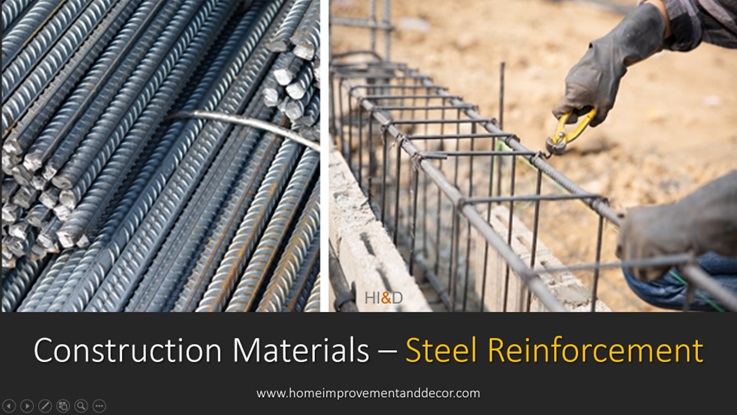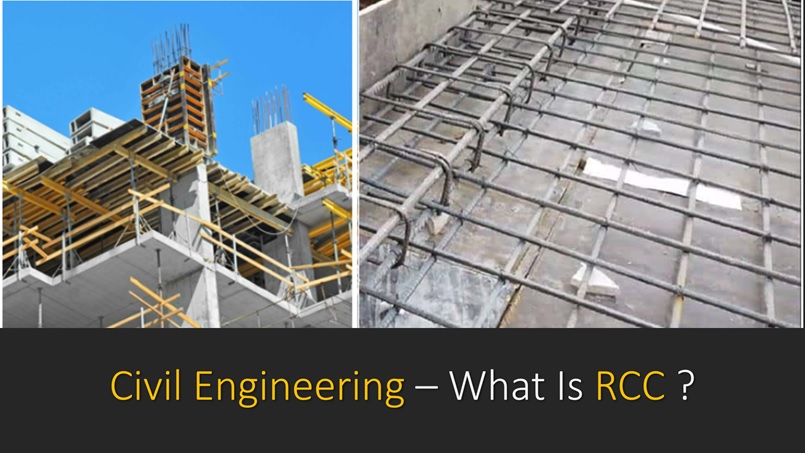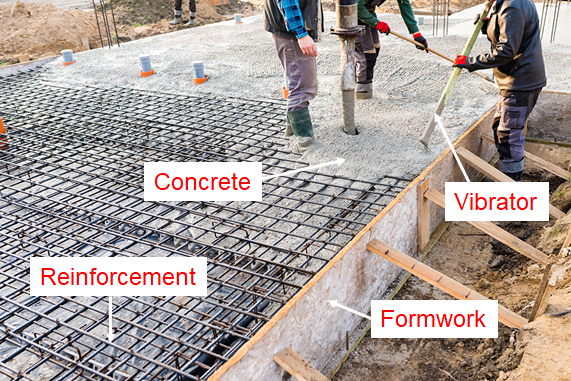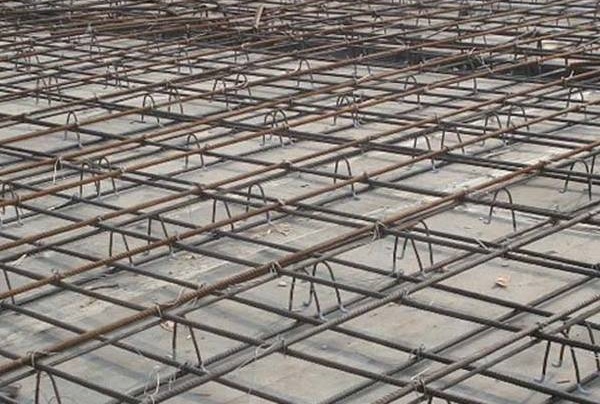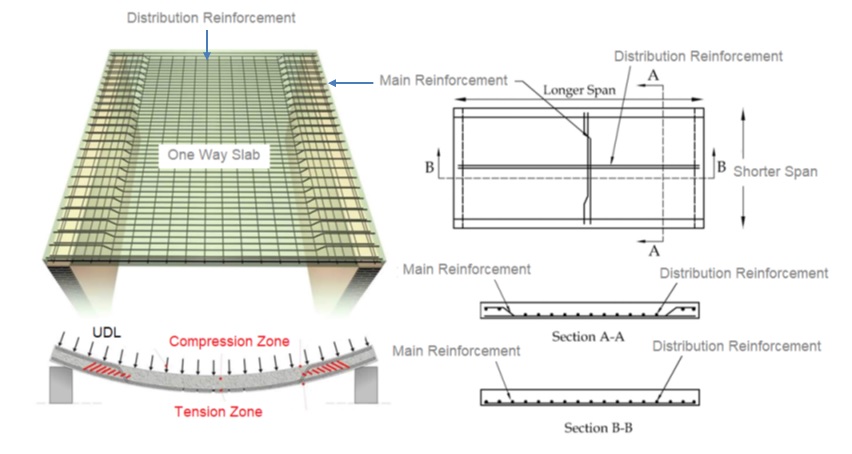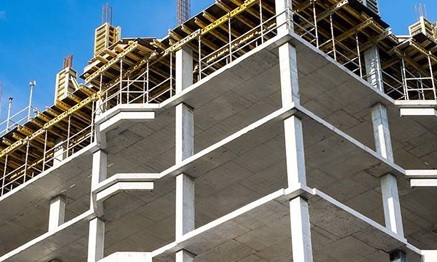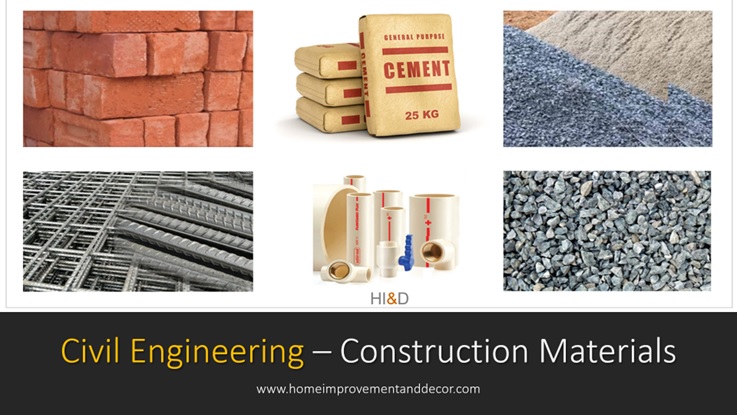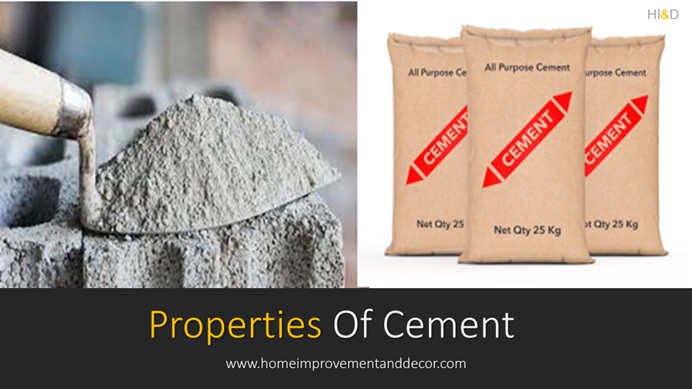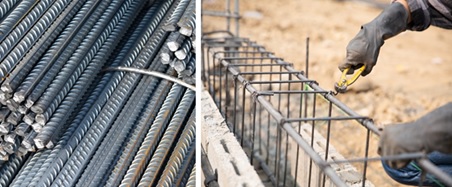
Steel Reinforcement
Steel reinforcement bars are used in the reinforced cement concrete RCC work to increase the tensile strength.
Steel reinforcement bars are extensively used construction material. It is a crucial component in modern construction, particularly in reinforced cement concrete (RCC) structures. It involves embedding steel bars or mesh within concrete to enhance its strength and durability.
This combination of materials, such as cement, aggregates, and steel bars, creates a composite material called RCC that can withstand tensile forces. Concrete can handle compressive stress, but it has poor tensile strength. Therefore, it is embedded with steel bars while casting the RCC structural members such as slabs, beams, columns, footings, retaining walls, basements, and other RCC structures.
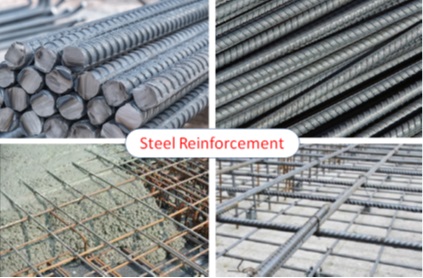
Steel reinforcement plays a fundamental role in modern construction, making structures stronger, more durable, and capable of withstanding various external forces over the long term. Proper structural engineering design, grade of concrete mix, construction practises, curing, and maintenance are vital to maximizing the strength of the RCC work in construction projects.
Construction Material - Steel Reinforcement
1. Reinforced Cement Concrete ( RCC )
Reinforced cement concrete is a composite material consisting of two primary components that is concrete and steel reinforcement. Concrete provides compressive strength, while steel reinforcement offers tensile strength. RCC is the most versatile and high strength construction material extensively used in the modern construction projects.
Read More
Construction Material – RCC
2. Types of Steel Reinforcement
Different types of steel bars are used in the construction work. The type of steel to be used as reinforcement depends upon structural design. Rebars are steel bars with ribbed surfaces that provide better bonding with concrete. They come in various sizes and grades, such as mild steel and high-strength deformed bars (often called TMT bars). b. Wire Mesh: Steel wire mesh consists of interconnected wires arranged in a grid pattern. It is often used in slabs, walls, and other structures to distribute tensile forces.
- Hot Rolled Deformed Bars.
- Cold Rolled Steel Bars.
- Mild Steel Bars.
- Twisted Steel Bars.
- Welded Steel Wire.
3. Steel Reinforcement Placement
The reinforcement is placed in the form of a cage prepared using different types and grades of steel bars depending upon the structural design. During construction, the steel reinforcement is placed in the formwork (molds) before pouring the concrete.
The position of the reinforcement is secured using a support called chairs. It is essential to ensure proper spacing and positioning of the reinforcement according to engineering design and structural requirements.
It’s crucial to maintain an adequate cover (distance between the surface of the steel and the outer surface of concrete) to protect the steel from corrosion. Additionally, using high-quality concrete and proper construction techniques are essential to ensure the longevity of reinforced structures.
4. Reinforcement in Different Structures
a. Buildings: Steel reinforcement is widely used in building construction, particularly in columns, beams, and slabs, to bear the loads and resist lateral forces.
b. Bridges: In bridges, steel reinforcement helps reinforce the structural members to withstand the weight of vehicles and other loads.
c. Retaining Walls: Steel reinforcement is essential in retaining walls to prevent cracking and ensure stability. d. Foundations: Steel reinforcement is used in foundation footings and slabs to provide additional strength against settlement and soil movement.

